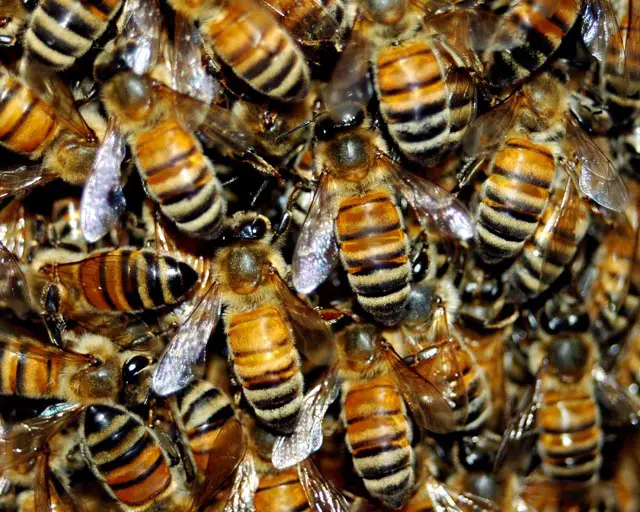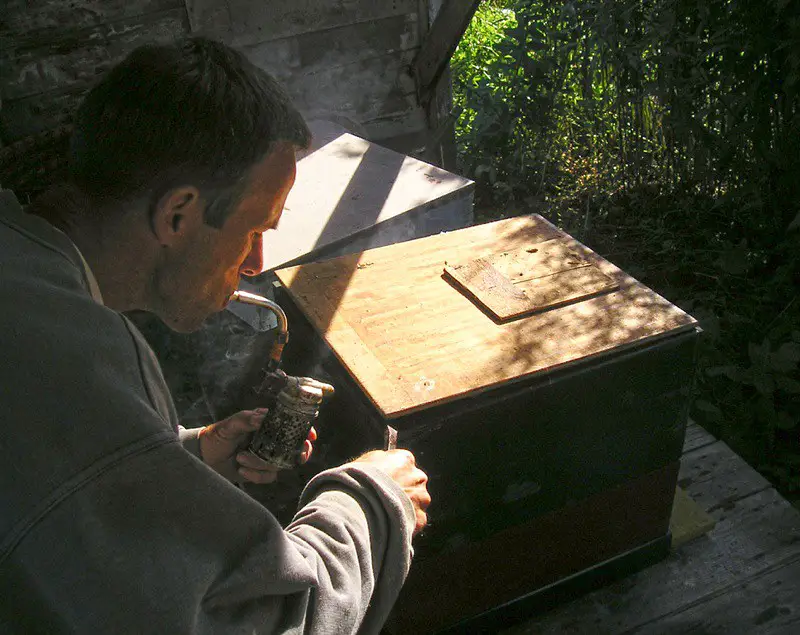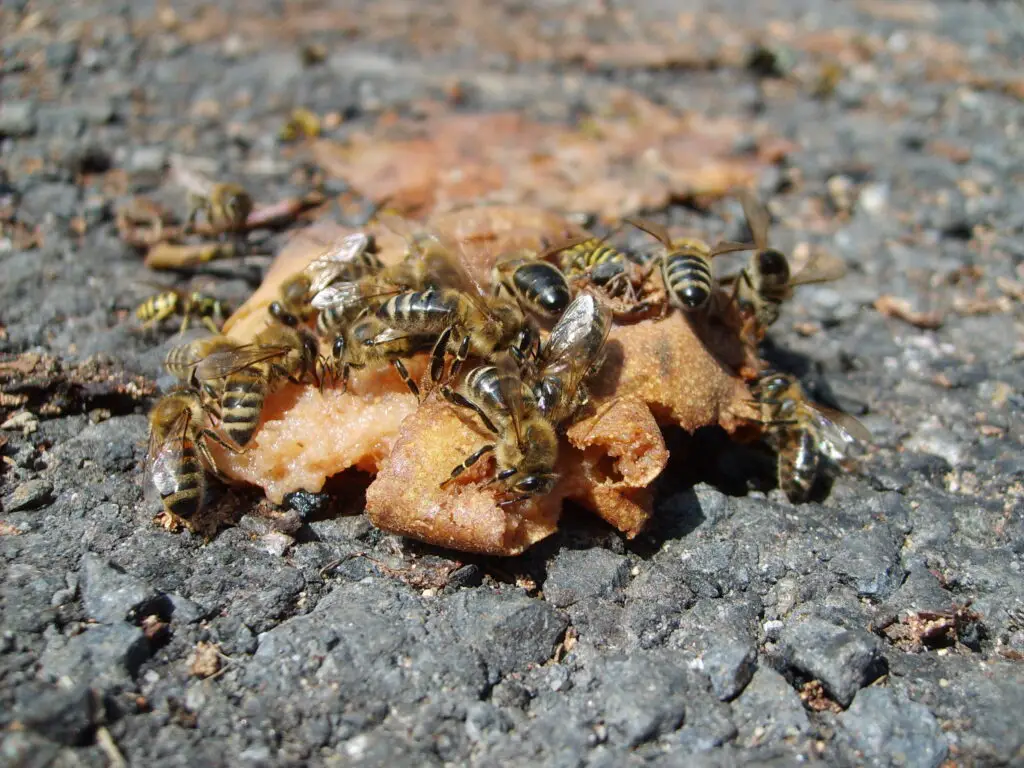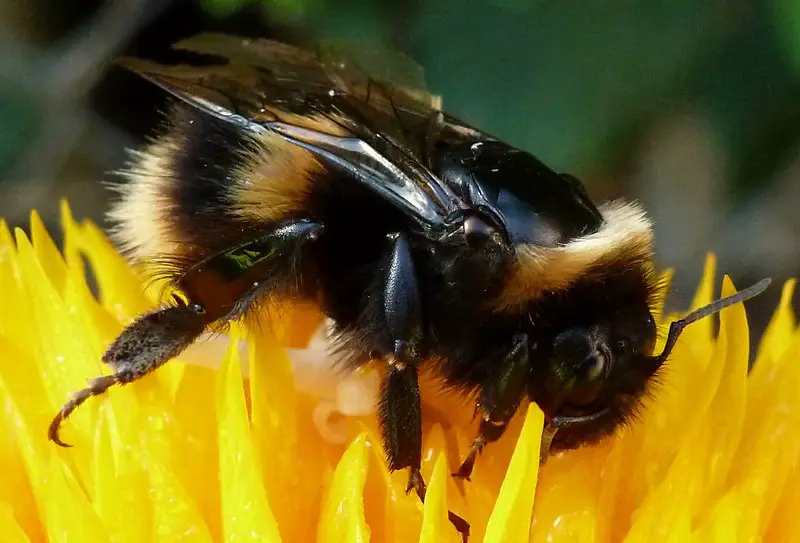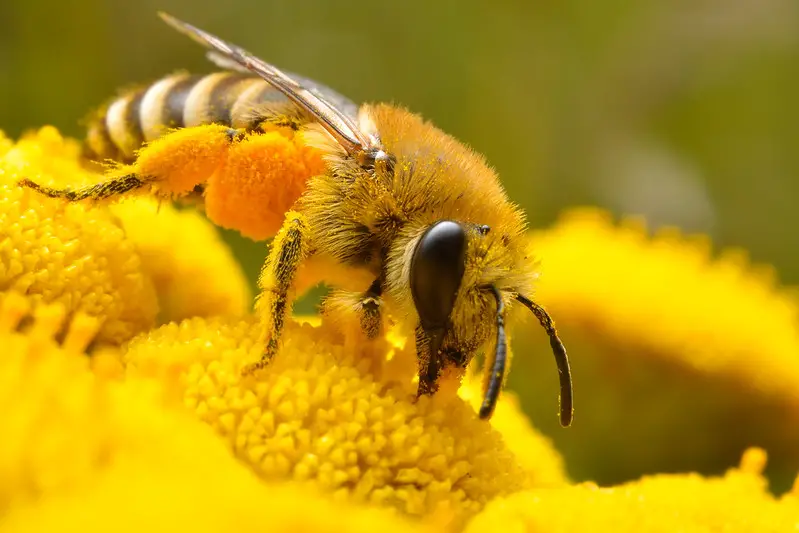Bees are important for the ecosystem. Beehives serve as a refuge and food source for bees, but when bees move in some areas like inside walls or buildings, the only option is bee removal. When beehives grow too large, some may swarm and leave the hive. If you see an abandoned beehive in your yard or home, it can seem daunting at first. Have no fear – we’re here to help!
Should I remove bees?
There are many reasons why people might need to get rid of bees. If bees have become a nuisance in your town or your home, know that you don’t have to call an exterminator to get rid of them.
You might be asking yourself, “How can I get rid of these pesky bees?” Well, luckily, there are a lot of ways to do just that. In this blog post, we’ll go over the steps you need to take in order to get rid of bees, what costs are associated with the removal, and how you can do it yourself if needed!
If you’re planning to remove a beehive from your home, it is important to make sure you do it correctly. Beehives are difficult to remove without the right equipment, and the process can cost thousands of dollars.
Many beekeepers clean up a swarm of bees for little or no money. Many hobbyists (experienced and others) are willing to take your bees for free, but no matter who you contact, respect the time and skill of these people. Even if the beekeeper has agreed to remove the bees for free, it might be a good idea to offer them a few dollars for their time and effort.
Be sure to contact the beekeeper who serves the area where bees are found. We appreciate your contact with the beekeeper for the removal of bees/swarms and ask that you treat these beekeepers with respect. If you have bees or a hive in your garden or home, you should get rid of bees as soon as possible.
Bees are essential to survival but also dangerous and an immediate threat and there are times when bee removal is the best option. Bees breeding too close to humans is unsafe but can also harm your property. Owners are responsible for killing bees on their territory. Thus, bee removal has features for both pest control and beekeeping. The control of pests (including harmful bees) meets the definition of pest control.
Hence, a person hired to eradicate a honeybee swarm or an established colony (even if they do not apply pesticides ) must be licensed which covers indoor and outdoor bee removal or lawns and ornamental plants removal, which covers the destruction of bees only when they are outside of the structure, for example, on a tree. Beekeepers hired to remove bees must be registered.
There should be a list of registered beekeepers and certified pest control operators who provide bee removal services in your area. Texas Apiary Inspection Service has no information on the qualifications or training of beekeepers to remove bees. The Texas Apiary Inspection Bureau maintains a list of registered beekeepers and issues permits to transport bees across counties when applying under Section 2.
Norbert Johnson provides efficient, chemical-free bee removal services at the facilities in Lincoln and St. John, Texas. Our bee elimination methods ensure the complete killing of all bees and other flocks without the use of harmful chemicals or killing methods. Your local pest control company should offer a comprehensive honey bee removal service that involves removing the honey bees and their honeycomb from the wall cavity.
It is very important to remove the combs so that bees do not return to the cavity later, as I assure you. Ask about your plan to remove existing combs and honey that may attract nearby bees.
A bee removal service provider is the best option to remove bees and wasps from walls, attics, spotlights, overhangs, gutters and other cavities depending on the type of bees in your area. The services include bee and wasp removal and control tools, nest removal, honey bee nest removal, bee and wasp pest control services for yellow vests, carpenter bees, hornets, killer cicadas, mud wasps and bee land.
The nests of most bees and wasps can be divided into two groups according to their nesting habits. These bees gather on branches or in secluded places until the scout finds a new home, usually within 12-36 hours. If bees settle in your home, there are experts who can remove them, but this usually leads to serious damage and renovation of your house or building.
Bumblebees usually only act defensively when their nest is disturbed or is at the height of a ladder, and an experienced beekeeper can collect the swarm in a short amount of time. Generally, bee colonies need to mature for a full year before they can be collected from the ground.
Most residents will pay attention to it, but will not consider it a problem until the early summer and until the peak of the number and size of the hives. Nobody wants to deal with a bee problem on their territory or with the return of bees, and we will get rid of the bee problem quickly and efficiently and at a competitive price.
Entertaining to the export of live bees and the relocation of domestic bees to public and private organizations can be dangerous and sometimes difficult, some bees buzzing outside or inside the home are usually a sign of the hive. If a bee colony has just emerged and is gathering in the open air this is called a swarm.
People who expect free live bees removal often assume that the beekeeper wants bees, that the task is simple and that these bees will do honey for them, but some believe that their bees have a value that exceeds the value of time and effort of the beekeepers.
Beekeepers with over 30 years of experience in removal of live and moving honey bees in and around Texas. We appreciate the contact with the beekeeper for the removal of bees / swarms and ask you to treat these beekeepers with respect. If honey bees have taken up residence in your house, there are experts who can remove them, but this often leads to serious destruction and reconstruction of your home.
Bumblebees or honey bees bite only when they protect their hive, nest or themselves from danger. If you find a swarm (congestion, ball or congestion) of bees in your area, do not panic.
If you have bees or a hive in your garden or home, you need to rid of them as soon as possible so that your property in the long run is free from unwanted bees. Bee killing methods ensure the complete killing of all bees and other flocks without the use of harmful chemicals or killing methods. The bee removal services include the complete removal of bees and other insects without killing them, regardless of the size of the infestation. We do not use pesticides and work to relocate bees wherever possible. If extermination is not absolutely necessary, we use vacuum cleaners and special bee boxes to remove bees and take them to our apiary or another beekeeper.
In most cases, we can remove the bees on the same day or schedule an appointment that is convenient for you.
The cleaning of bees is individual, but our removal plan is always based on what is best for the safety of the people using the space, the general population and the health and well-being of the colony. Owners are responsible for killing bees on their territory. Therefore, a person hired to eradicate a honeybee swarm or an established colony must be licensed under General Household Pests (GHP ) that covers indoor and outdoor removal or removal of lawns and ornamental plants ( L&O ) which only covers the destruction of bees outside the structure, for example on a tree.
Many beekeepers clean up a swarm of bees for little or no money ; some will ask for a donation or minimum refund to pay for fuel costs. If the bees are in an area that requires more sophisticated equipment to reach them or are enclosed in walls or other structures, you can count on a fee to apply to the beekeeper who serves the area where the bees are found.
Although it is true that some amateur beekeepers happily remove bee colonies for free, it might be a good idea to offer a few dollars for gasoline, your garden products or some other gesture of appreciation to them. Many beekeepers charge a fee to remove live bees free of charge. People who expect to remove live bees free of charge often assume that the beekeeper wants bees and these bees will do honey for them.
Also, trimming old structures to remove bees can expose the beekeeper to lead paint, asbestos or other harmful materials. If bees are found in a wall, attic, chimney or enclosed space, the sooner the problem is resolved the fewer honeycombs will need to be removed. If you live in a forested area you may need regular bee pest control services in summer and autumn, i.e. Quarterly, if you need long-term monitoring.
Pest control offers a comprehensive honey bee removal service that includes removing honey bees and their honeycomb from the wall cavity. Bee and wasp exterminators fog up behind wall cavities or siding and find yellow jacket nests remove wasps and immediately maintain the rest of the exterior to prevent pests from re-entering.
Removing bees is a separate skill set that can take years to perfect, although most beekeepers are adept at removing small flocks. Getting rid of the hive properly can be challenging and requires a specific set of skills acquired over time. We specialize in all kinds of bee problems, from removing live bees to retrieving the hive, opening and repairing structures, waterproofing and preventing bees and controlling other pests such as wasps, hornet
Sebastian’s Bee Service provides efficient, chemical-free bee removal services at facilities in California. For more information on bee removal write down your list of questions to ask bee removal professionals. Be sure to have information on the qualifications or training of the beekeepers to remove honey bees.
Have you ever been awakened in the middle of the night by a buzzing noise and found out that it was a beehive in your walls? Not knowing what to do, you call an exterminator who charges $500 for removal. If only there was a way to remove these things yourself, right? Well, thankfully, there is! In this article, we have talked about how to get rid of a beehive and some of the DIY options available to do so.
